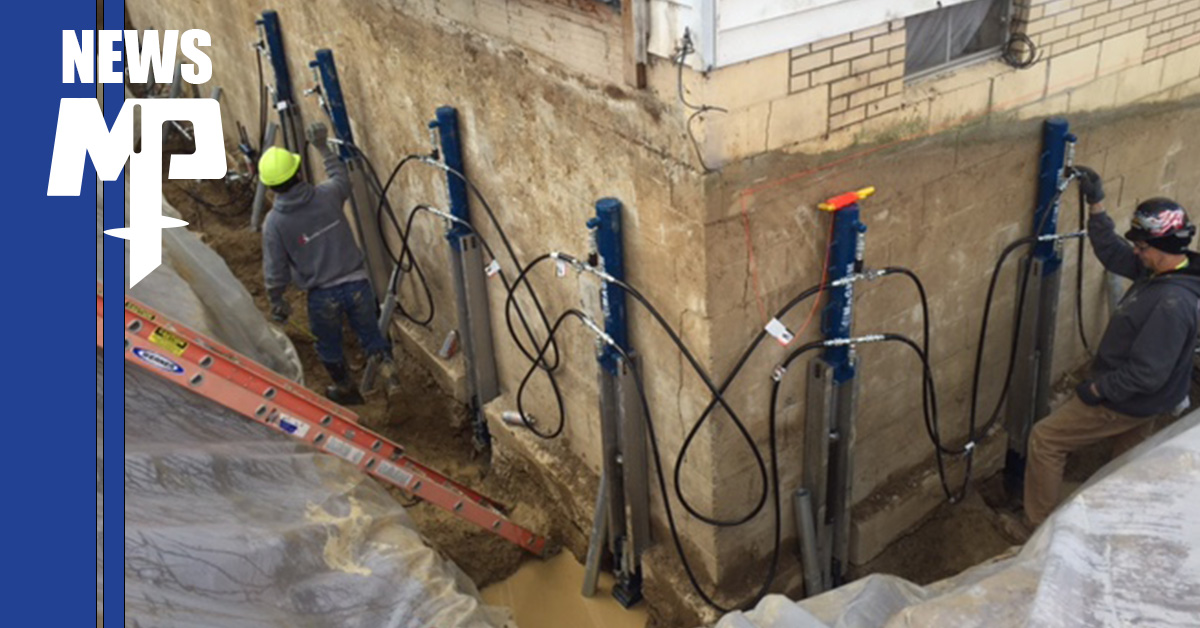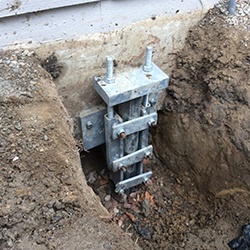Browsing Your Choices for Foundation Repair Oklahoma City: A Homeowner's Manual
Browsing Your Choices for Foundation Repair Oklahoma City: A Homeowner's Manual
Blog Article
Discovering Various Approaches of Foundation Repair Service for Various Dirt Types
Structure repair work is a crucial facet of maintaining structural honesty, particularly when thinking about the varied obstacles positioned by various dirt types. The intricacy of dirt actions under differing problems demands a tailored approach to fix, making certain optimal services such as helical piers for unsteady soils or chemical grouts for natural layers. The inquiry remains: how do we establish the most efficient technique for each unique circumstance? Understanding the interaction in between soil attributes and repair strategies is critical, yet there is even more to discover in the quest for lasting remedies. What variables truly dictate the selection of approach?
Understanding Soil Types
Soil types play an important function in the stability and durability of building foundations, making it vital for house owners and construction professionals to understand their attributes and actions. The interaction in between dirt and structure can establish the structural stability of a structure. There are a number of dirt kinds, each with distinctive physical buildings that affect just how structures are created and kept.
Granular soils, such as sand and crushed rock, offer excellent water drainage and are usually thought about secure. In comparison, cohesive dirts like silts and clays show various behaviors.
Rocky dirts, understood for their toughness and stability, offer outstanding support for structures however may need customized devices for excavation. On the other hand, fertile soils, which are a balanced mixture of silt, sand, and clay, frequently provide beneficial conditions for foundation support because of their moderate water drainage properties.

Comprehending these dirt kinds is crucial for selecting proper foundation repair service techniques, making sure the toughness and safety and security of structures in time.
Obstacles With Extensive Clay
Amongst the different soil kinds, expansive clay presents unique difficulties for structure security due to its propensity to go through significant quantity adjustments with wetness variation. This sort of dirt swells when wet and agreements when dry, which can apply considerable pressure on frameworks. These changes can bring about foundation cracking, heaving, and negotiation concerns, positioning substantial risks to the structural honesty of structures.
The obstacles with expansive clay are worsened by its plasticity index, which determines the dirt's ability to alter shape and quantity. A high plasticity index indicates better potential for motion, enhancing the probability of damage to structures. This is especially troublesome in areas experiencing severe or regular weather modifications, where cycles of wet and completely dry problems are typical.
Moreover, the depth of expansive clay layers can differ, complicating the analysis and preparation of proper foundation repair techniques. These intricacies require a complete geotechnical assessment to ensure effective foundation fixing methods are carried out, emphasizing the value of resolving large clay challenges with expertise and treatment.
Solutions for Sandy Soils
Sandy soils, identified by their huge bit dimension and low cohesion, present distinctive obstacles for foundation security due to their tendency for changing and disintegration. These properties require specialized structure repair techniques to guarantee structural stability. One efficient remedy is the use of deep structure systems such as helical piers or driven stacks. By anchoring the foundation to much deeper, a lot more steady soil layers, these systems can give the required support to counteract the moving nature of sandy dirts.
An additional recommended approach is the application of dirt stabilization methods. Chemical grouting, for circumstances, involves infusing a supporting representative right into the soil, which enhances cohesion and decreases permeability. This procedure helps to solidify the sandy substratum, thus lessening the danger of disintegration and movement.
Additionally, installing correct drain systems is crucial in sandy soil conditions. Guaranteeing appropriate drainage can avoid water buildup around the structure, which usually exacerbates disintegration and dirt displacement. Techniques such as French drains pipes or surface grading can be used to guide water far from the structure perimeter.
Addressing Resolving in Loamy Soils
Loamy dirts, known for their well balanced mix of clay, sand, and silt, offer an abundant base for many frameworks but can occasionally result in structure settling because of their special structure. This well balanced texture offers visit the site exceptional drainage and nutrient retention, making it ideal for farming and landscape design. However, this exact same attribute can become bothersome for foundations, as changes in wetness material can create the dirt to broaden or contract, causing clearing up.
Addressing resolving in loamy dirts calls for a complex technique. Precise dirt testing is crucial to determine the specific composition and dampness material of the loam. When information is gathered, carrying out proper drainage solutions is crucial to maintain consistent dampness degrees, thereby decreasing the risk of dirt contraction or development. French drains pipes or surface area grading work techniques to reroute water far from the foundation.

Ingenious Repair Work Methods
In the realm of structure fixing, ingenious techniques are continuously being developed to attend to the complicated tests posed by numerous dirt conditions. As soil kinds differ substantially in their structural properties, traditional techniques may not constantly suffice. The development of new innovations in foundation repair work provides a lot more tailored remedies, ensuring stability and long life.
One remarkable development is making use of helical piers, which are original site particularly efficient in unsteady or large dirts (foundation repair okc ok). These piers are screwed into the ground until they reach a steady layer of dirt, using strong support for the foundation above. This approach decreases disruption and is adaptable to different dirt types, making it a flexible option
One more cutting-edge strategy is the application of polyurethane foam shot. This technique entails infusing high-density polyurethane foam below the structure to fill up spaces and stabilize the structure. It is a much less intrusive alternative to conventional foundation, supplying fast installation with marginal disruption to the surrounding area.
Additionally, dirt stablizing methods, such as using chemical grouts, have actually acquired traction. These substances enhance soil stamina and minimize permeability, protecting against future shifting. Jointly, these innovative fixing strategies offer reliable options for the diverse difficulties posed by differing dirt problems.
Final Thought

Structure repair is an important aspect of maintaining architectural stability, specifically when thinking about the varied difficulties postured by various dirt kinds (foundation repair oklahoma city). The complexity of soil behavior under over here varying conditions necessitates a customized strategy to repair, ensuring ideal options such as helical piers for unstable soils or chemical cements for cohesive layers. By securing the structure to much deeper, a lot more secure dirt layers, these systems can offer the required support to neutralize the changing nature of sandy dirts
Foundation fixing needs mindful consideration of dirt types to make sure stability and durability. Chemical grouts enhance soil strength and lower leaks in the structure in natural dirts.
Report this page